Snapdragon vs. Hummingbird vs. OMAP - the mobile CPU war beyond 1GHz

1GHz processors on high-end handsets are all the rage now, but 1.5GHz puppies with more than one core have finished sampling and are being shipped to manufacturers. These are already desktop clock speeds, but how much is enough? Will the mobile CPU war fall victim of the same delusion the desktop one had – that faster is better? Or will it try to find the sweet spot between raw power and energy consumption as their laptop counterparts did?
We think the answer will be known sooner rather than later as we've already attained the magic 1GHz number, and the upcoming CPUs promise even higher clock speeds with the same power consumption. Hummingbirds and Snapdragons - these 1GHz animals are offering all-in-one solutions to cell phone manufacturers. Called system-on-a-chip (SoC), they take care of both the system tasks and the hardware video acceleration, often along with all baseband and RF connectivity, the GPS module and the multimedia processing. They are designed to fulfill the longest lasting dream of any electronics user – to carry one device that does it all decently.
Qualcomm, Samsung, Apple and Texas Instruments are currently the major SoC players, and they have something in common – all of their chipsets are based on the ARM architecture. ARM Holdings owns the intellectual property rights on processor architecture; they develop the next generation’s schematics, and then sell them to chip manufacturers to come up with their own custom SoC solutions. The current 1GHz mobile CPUs are based on ARM's Cortex-A8 generation, but Cortex-A9 is just around the corner, and it is exciting.

Qualcomm's Snapdragon family is probably the household name when it comes to 1GHz mobile CPUs. It's been around for more than a year now, shining initially in the Toshiba TG01, then powering such prominent phones as the HTC HD2, the Nexus One and the HTC EVO 4G. The Snapdragon's Scorpion core takes care to add better multimedia instructions and power management to the Cortex-A8 core of ARM Holdings.
The prevailing concern for the company was to make a mobile SoC that can go all day on a single charge, thus Snapdragon was designed with low power consumption in mind. For the graphics tasks, Qualcomm relies on the AMD Z430 processor after purchasing Imageon - the mobile graphics department of AMD, then rebadged their GPUs (originally developed by ATI) under the Adreno moniker. This first generation of Snapdragon is produced with the older 65nm technology, which fits less transistors on the same space than the new, upcoming iteration of these chips, manufactured with the 45nm process.
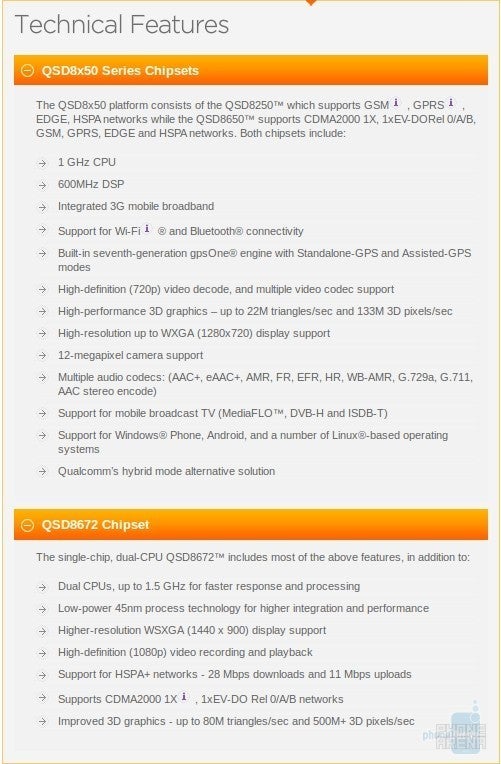
The third generation of the ubiquitous Snapdragon is the most interesting one, of course. The MSM8260 and MSM8660 chipsets for high-end smartphones will be dual-core, with each core running at up to 1.2 GHz. Even faster version supporting larger screen resolutions is QSD8672 – two cores humming at the sweet 1.5GHz, which will most likely go into tablets, or the likes of the Dell Streak. Qualcomm has the advantage of having finished the sampling of its next generation SoCs, and HTC is rumored to be the chief beneficiary, so they might be first to deliver a smartphone with two processor cores.
What do these dual Scorpion core Snapdragon chips promise for us spoiled brats waiting on the shiny new toy? Full HD 1080p video recording and decoding plus dedicated low-power audio engine for multichannel home-theater surround sound, for starters. Add to that a GPU subsystem based on the new Adreno 220, and capable of up to 80mln triangles per second for enhanced 3D gaming plus an integrated low-power GPS. All these “low-power” adjectives are not coincidental - the third generation is supposed to use 30% less energy than the single core Snapdragons, also because the work will be evenly distributed between cores.
A chief differentiation of Qualcomm for their Snapdragon architecture is to make it a truly all-in-one solution for the various tasks on a modern smartphone. After spending more than a decade in CDMA devices, its baseband modem chips are now integrated in the Snapdragon SoC, saving manufacturers the effort to add third party silicon. The MSM8660 Snapdragon will even support both multi-mode HSPA+ and 1xEV-DO Rev - a true world phone with dual-core prowess.
Samsung Hummingbird and Apple A4:
The next-gen Snapdragons above will be produced with the 45nm technology, but there are actually phones on the market with CPUs that utilize this technology right now. Enter Samsung’s Hummingbird chipset, a SoC which powers the company’s first bada OS phone – the Samsung Wave, and the Galaxy S with its US carrier versions.
The main added value of Samsung’s Hummingbird chipset, compared with the other current hardware platforms, though, is said to be in the graphics subsystem. It is built around a PowerVR SGX 540 core, and Samsung claims a theoretical processing of up to 90mln triangles per second. The 2D performance of the Hummingbird is better with an even larger margin – a billion pixels per second versus half a billion for the dual-core Snapdragon.
It is not entirely clear for us how the chipset manufacturers are reaching these speeds, but the end result is outstanding, and on par with what mobile gaming systems are achieving. The iPhone 3GS, however, has the previous version of the PowerVR chips, and still managed to run the most enticing 3D titles ever to appear on a small screen, so it is all up to game developers now to take advantage of the new raw speeds.
The 3GS successor, the iPhone 4, is having a custom designed chipset called A4, which is running the iPad as well. Samsung developed the Hummingbird platform based on intellectual property from Intrinsity, a processing solutions company that Apple bought last year for $121 mln to lock in the A4 exclusivity for its own mobile gadgets. Therefore, when dissected, both Hummingbird and A4 share a lot of commonalities, and we’d assume they are fairly similar in basic capabilities too.
As if to back up these suspicions, the Samsung Galaxy S with its US carrier versions, and the iPhone 4 occupy the top two places in the graphics GLBenchmark 1.1 test. The acquisition of the fast chip designers by Apple hasn't severed the ties with Samsung, as they are still contractually obliged to support the Hummingbird platform.

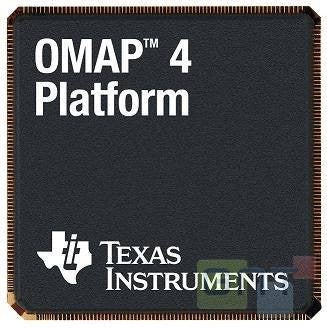
Bear in mind that all those generations of the Snapdragon family, plus the Hummingbird and Apple's A4, are still based on ARM's Cortex-A8 architecture despite being heavily customized. Even the dual-core Snapdragons will be a rehash of Cortex-A8 with 45nm technology.
One of the current big players, which announced a Cortex-A9 chipset that will be available for smartphones, is Texas Instruments. TI's current A8-based OMAP3 family can be found in various phones running the gamut of mobile operating systems. Its most popular reincarnations are perhaps the Motorola DROID line, and the Nokia N-series. The new DROID X has an OMAP 3630 chipset inside, clocked at 1GHz and produced with 45nm technology. Power management of TI's current flagship seems to be outstanding given the DROID X's claimed 8 hrs of talk time.
The OMAP4 generation is where it gets really interesting, but we are yet to hear for a handset with these A9 chips to be announced. Cortex-A9 is a completely different animal, focusing on multiple core operation, dual-channel memory controller, efficient instruction handling up to the application level, and overall superior power management. OMAP4 should offer what dual-core Snapdragons do, plus even better battery life, universal hardware decoding for playing any media file you get to it, and TI's superior image processing and stabilization technologies.
The OMAP4 family, however, doesn't come with an integrated baseband modem as Qualcomm's Snapdragon solution. The TI dual-core OMAP4 chipset is also running at the slower 1GHz speed, but knowing how prone to overclocking the OMAP chips are, difference in raw speeds should be negligible. In fact, TI itself is listing the cores as 1GHz+.
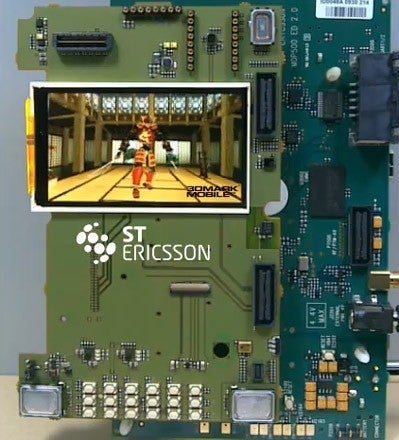
There is another dual-core Cortex-A9 based smartphone SoC besides OMAP4, and from a very worthy contender. It is a creation of ST-Ericsson – a joint venture between Ericsson, whose wireless chips are found in more than half of the cell phones worldwide, and STMicroelectronics. The chipset is called U8500, supports up to 1.2GHz dual-core CPUs and, similarly to OMAP4, takes advantage of the rich SMP (Symmetric Multi-Processing) functionality that Cortex-A9 has to offer.
Others ARMed and maybe dangerous:
There are still other big players in the mobile processing universe such as NVIDIA, Marvel and Freescale. Marvel's SoC Pantheon is on a mission to bring smartphones under the $100 price point, integrating also the baseband and RF connectivity. The same thing is doing MediaTek, which partnered both with Microsoft and with Google this year to produce affordable smartphones with its SoC for emerging markets. Freescale's i.MX535 chipset might be seen in tablets with more than one core, and the company is huge in the e-readers industry, for example. NVIDIA's upcoming Tegra 250 chipset relies heavily on the company's graphics calculations prowess, and is also a dual-core Cortex-A9 endeavor. NVIDIA claims ultra low-power requirements by including eight processors dedicated to different tasks, something that the other upcoming SoCs are doing as well. Buried in the Tegra's white papers, though, we found stats for 140 hours of audio on a standard 2000mAh battery, while the big boys are achieving 120 hours, but from a 1000mAh battery. Nevertheless, the current Tegra found its way into Microsoft's Zune player, and Tegra 250 has claimed intentions for the smartphone market as well, so our money would be on NVIDIA as the underdog, if they improve on the wireless connectivity front.
So far they are all niche players, but all of the above chipsets are supporting Android. They might be far from the already proven system-on-a-chip solutions for smartphones that TI, Samsung, Apple, and especially Qualcomm are offering, but a surprising development might come from any of them, and then some. Microsoft, for instance, just recently signed a licensing agreement with ARM Holdings for their chip architecture, which makes it a part of a select few to do so. Qualcomm, Marvel and Infineon have such agreements, and these companies all produce chips. Intel is rumored to purchase Infineon as what they are lacking to produce a Snapdragon type of SoC, is the wireless chips expertise.
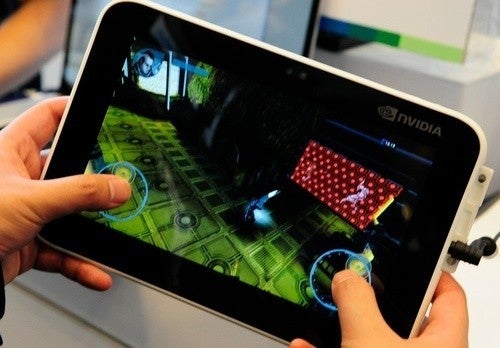
Moorestown – life without ARMs:
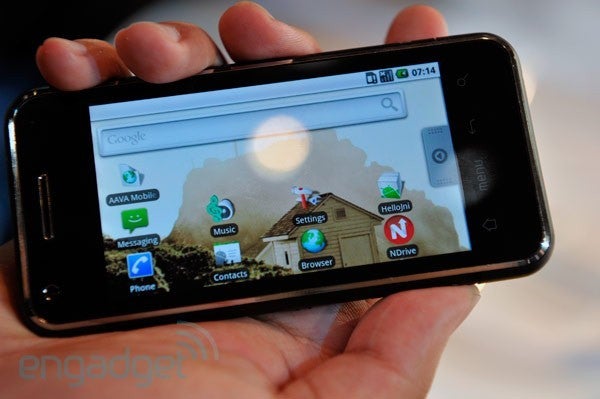
Let's recap with a shaking hand what can we expect from the next generation of smartphones based on the features those upcoming 45nm SoCs support:
- Significantly improved battery life over the current generation. Today, if you get a full day out of your phone, you should not be calling yourself a power user. Hummingbird and A4 are already giving uptimes longer than that, but the dual-core Snapdragons and OMAP4 will probably enhance unplugged time even further. Moreover, dedicated graphics, low-power audio and GPS chips will be offloading non-typical calculations from the CPU, and we should see longer battery hours when playing music, video, or using the phone's global positioning capabilities. 120 hours of music playback is a number cited for both Cortex-A9 chipsets – the TI OMAP4, and ST-Ericsson's U8500;
- Outlandishly thin and light handsets. Being able to fit more transistors on the same space should work wonders for the design studios to make thin handsets with excellent heat dissipation, or fit new features in current form factors. Don't take our word for it, just look at the iPhone 4, the Samsung Galaxy S and the Samsung Wave. Maybe we can finally see optical zoom inside a thin handset? Here's for hoping... or at least a lighter!
- Full 1080p HD video recording, decoding and on-handset editing. Not that 720p isn't already good enough for most general purposes, but we are positive that marketing departments will spin this feature like there's no tomorrow. This would be the biggest drag on battery life, too, with claims of not more than 4hrs of full HD video on a 1500mAh battery for the Moorestown platform, although the Cortex-A9 based chipsets promise twelve. Handsets with Texas Instruments' OMAP4 family should have a slight edge here, given its hardware codecs and image processing capabilities;
- Improved still photography. Support for higher camera resolutions up to around 20MP, and more place inside the phone to fit a bigger sensor should produce some amazing results from a phone's camera. In addition, hardware image enhancement algorithms and stabilization will be supported in OMAP4. Coupled with the ability to fit more powerful LED or Xenon flash units for improved low-light performance, it will all come up to your phone being the only camera you'll need for casual snaps;
- Console level gaming. Those peak 90mil triangles per second in the current generation Hummingbird are an outstanding achievement in a mobile processing system. The OMAP4 chipset demoed an amazing proof-of-concept Blaze device at this year's MWC. The demo unit had 3-axis accelerometer, 3-axis gyro, temperature sensor, ambient light sensor, proximity sensor, digital compass and pressure (barometric) sensor to top it off. When matching the graphics subsystems to this boatload of sensors, mobile gaming possibilities are only limited by the developers' imagination;
- Desktop-like web browsing, Java Script rendering, 2D and 3D graphics performance. All the graphics enhancements should be bringing smooth and more interactive user interfaces with no discernible lag, as well as the Internet in its full glory to your small screen. TI's OMAP4 presentation hardware rendered a website for 2 sec, down from 5 sec on the previous version, so we have some idea what real-life enhancements would be. The Blaze presentation also hinted at 3D UI capabilities, and has a hardware support of Adobe Flash 10.1. Qualcomm even has a video demo of a 3D World UI for Snapdragon on its website to fill in your imagination gaps;
- Additional video output options and multiple displays support. Besides supporting 1080p HDMI-out, the new chipsets are able to support more than one display simultaneously. TI's Blaze device had two 3.7” capacitive screens at once, while outputting content to an HDTV, or powering its 15 lumen DLP Pico projector (the upcoming Samsung Galaxy Beam has a TI 6 lumen projector, for comparison). Numerous application possibilities to take advantage of more than one screen with different content running in parallel come to mind;
- Touchless gesture-based UI trough visual object recognition, and 3D-HD recording. The wildest fantasies for what a smartphone could be are visualized again courtesy of Texas Instruments with the OMAP4 platform.
How far can the mobile processing industry go at that point? ARM is already exploring 28nm, and even 20nm processes, so who knows where it will all end. What is even more exciting is that smartphones with the above features are not some far-fetched possibility. Most of those mobile systems-on-a-chip are going into devices that will be announced before the year has passed. Granted, sacrifices will have to be made and not all of the possible features will be appearing in one or even a few devices at once.
We are living in a pivotal year for the smartphone industry that will shape how people access information and interact with each other wherever they are for years to come. Numerous chipset and screen technologies are revolving around even more operating systems, user interfaces and applications. Whatever the outcome of the mobile CPU war is, one thing is for sure – the consumers will win in the end.
sources: AlienBabelTech, more and Tested









![A new Android bug is making it impossible to install new apps. Are you affected? [UPDATE]](https://m-cdn.phonearena.com/images/article/176703-wide-two_350/A-new-Android-bug-is-making-it-impossible-to-install-new-apps.-Are-you-affected-UPDATE.webp)


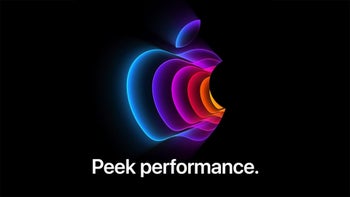
Things that are NOT allowed:
To help keep our community safe and free from spam, we apply temporary limits to newly created accounts: